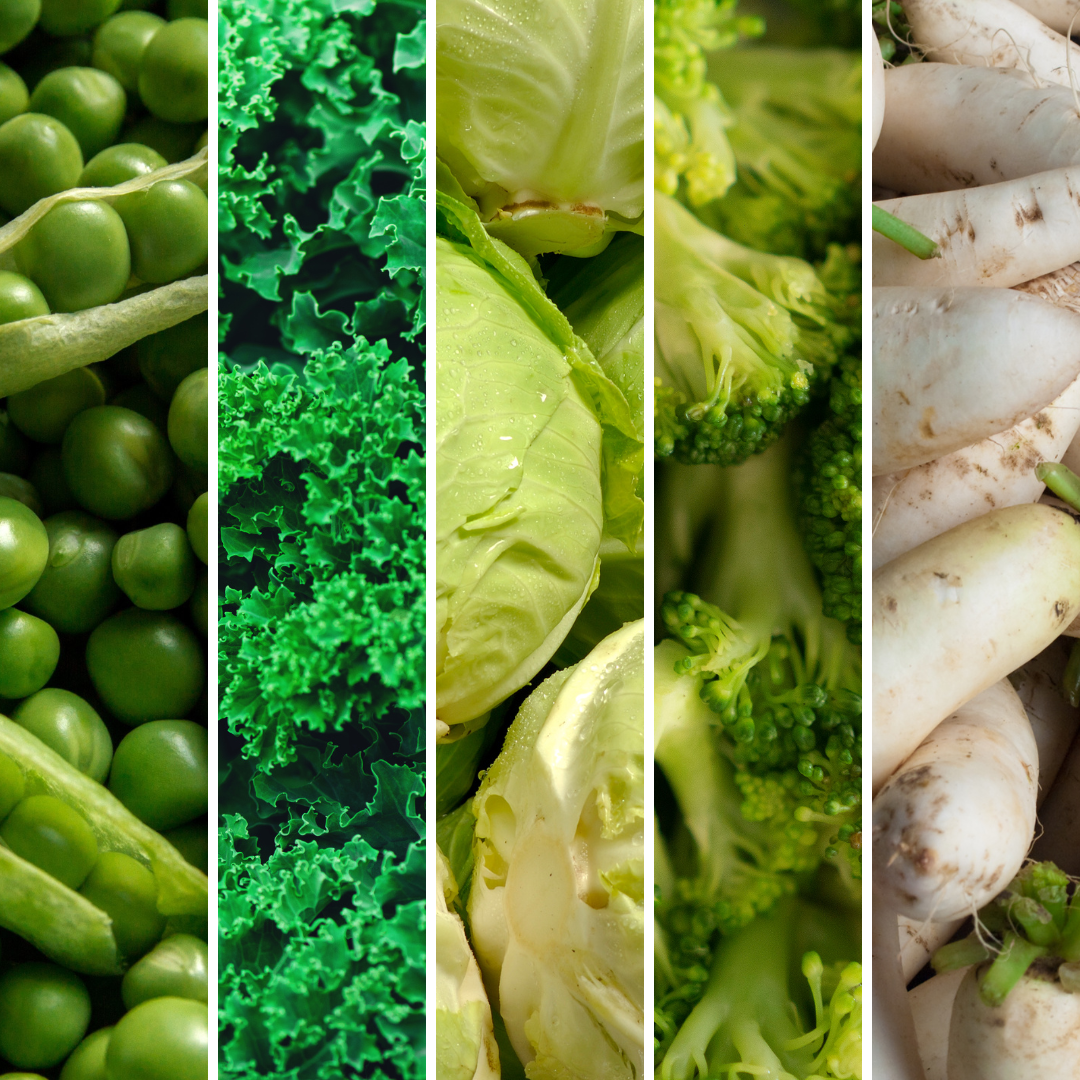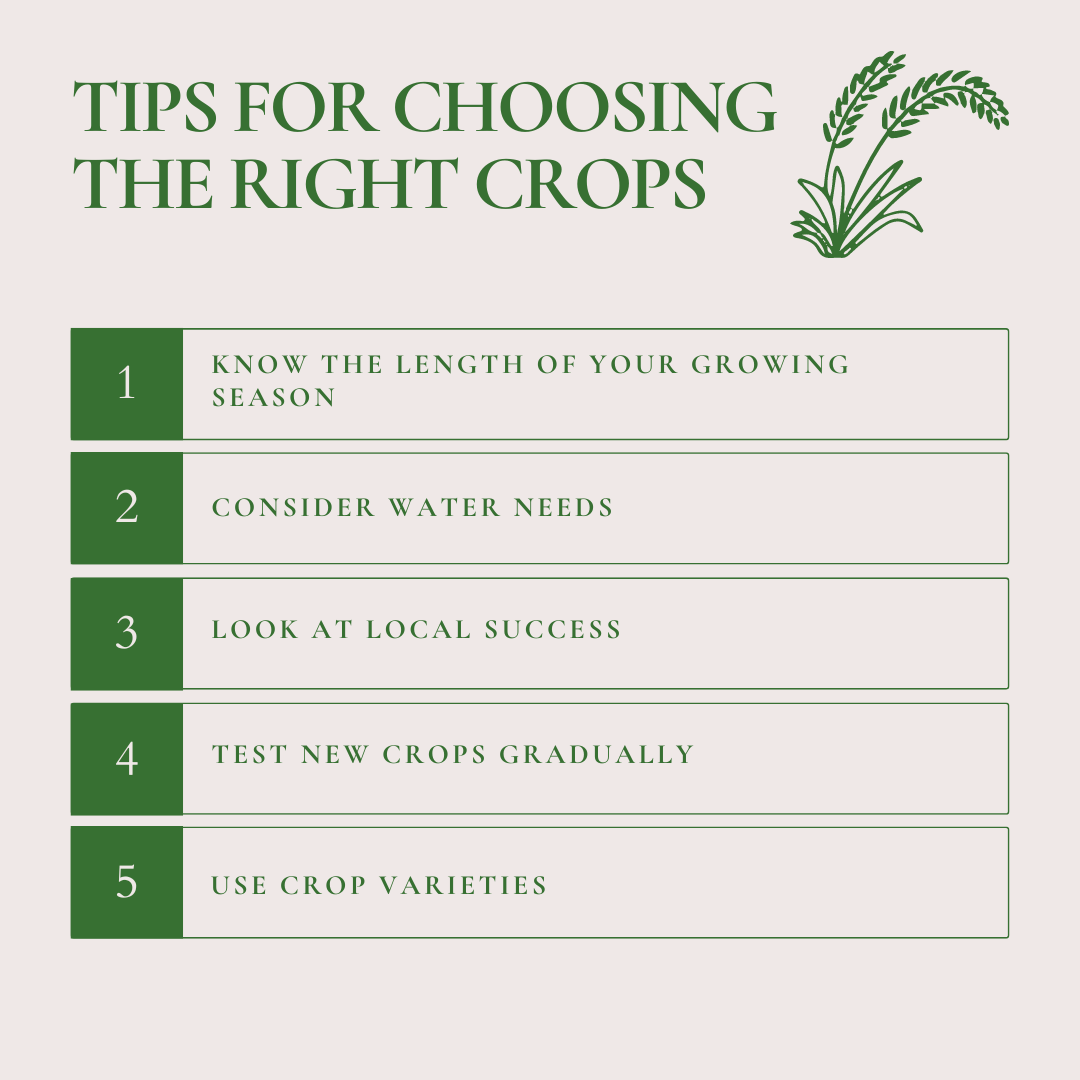Table of Contents
ToggleIntroduction: Why Choosing the Right Crops Matters
Selecting the right crops for your farm based on the local climate is one of the most important decisions a farmer can make. The climate affects how well crops grow, how much water they need, and even how resistant they are to diseases and pests.
Growing crops that match your region’s climate helps ensure a good harvest, saves water, and reduces the need for chemicals.
This guide will explain how you can choose the best crops for your specific climate simply and practically.
Understanding Your Climate
Before you choose the crops, it’s important to understand the climate of your area. Climate is more than just the weather. It includes temperature, rainfall, humidity, and even the length of the growing season. Here are a few key things to consider:
- Temperature: Some crops, like tomatoes, thrive in hot climates, while others, like spinach, prefer cooler weather.
- Rainfall: Water is crucial for crops. Some plants need a lot of rain, while others, like cacti, can survive with very little.
- Frost and Growing Season: Frost can kill many crops. The number of frost-free days in your area determines how long you can grow certain plants.
- Soil Type: Climate can also affect the soil. For example, hot and dry areas often have sandy soils, while wet climates might have clay soils.

To understand your climate better, you can look at long-term weather patterns or use local agricultural extensions that often provide free advice to farmers.
Matching Crops to Your Climate
Once you know your climate, the next step is to choose crops that will thrive in those conditions. Here’s a guide to matching crops with different types of climates:
1. Tropical Climates
Tropical climates are usually hot and humid, with plenty of rainfall throughout the year. In these areas, farmers can grow crops that need warmth and moisture.

Best Crops for Tropical Climates:
- Bananas
- Pineapples
- Rice
- Sugarcane
- Mangoes
These crops thrive in warm temperatures and high humidity. The soil in tropical areas is often fertile, but because of heavy rainfall, farmers should pay attention to water drainage to prevent root rot.
2. Dry or Arid Climates
In dry regions, there is very little rainfall, and temperatures are usually high. Crops that grow here need to be drought-tolerant, meaning they can survive with little water.
Best Crops for Dry Climates:
- Cactus
- Millet
- Sorghum
- Chickpeas
- Dates
These crops have adapted to survive in low-water conditions. Farmers in dry climates may also use techniques like drip irrigation to make the most of the water they have.
3. Temperate Climates
Temperate climates have four distinct seasons: spring, summer, fall, and winter. This climate is ideal for many crops because the temperatures are not too extreme.
Best Crops for Temperate Climates:
- Wheat
- Barley
- Apples
- Potatoes
- Carrots

In temperate regions, farmers can grow a wide variety of crops depending on the season. Cool-season crops, like spinach and lettuce, do well in spring and fall, while warm-season crops, like tomatoes and peppers, grow best in the summer.
4. Cold Climates
Cold climates have short growing seasons, and frost can be a big problem. Farmers in these areas need to choose crops that can handle cool temperatures or grow quickly during the warmer months.
Best Crops for Cold Climates:

- Peas
- Kale
- Cabbage
- Broccoli
- Radishes
These crops can tolerate frost or mature quickly before the cold weather returns. Using greenhouses or tunnels can also extend the growing season in cold climates.
Tips for Choosing the Right Crops

1. Know the Length of Your Growing Season
The length of your growing season is the number of frost-free days you have each year. If you have a short growing season, choose crops that mature quickly, such as lettuce, radishes, or beans. In longer growing seasons, you can grow crops that take more time, like corn or pumpkins.
2. Consider Water Needs
Crops differ in how much water they need. In areas with a lot of rainfall, water-loving crops like rice or sugarcane do well. In drier areas, choose drought-resistant crops like millet, sorghum, or chickpeas.

If your climate has inconsistent rainfall, consider using irrigation systems to manage water efficiently.
3. Look at Local Success
One of the best ways to know which crops to grow is to look at what other farmers in your area are planting. If a crop does well for your neighbors, there’s a good chance it will work for you too. Local farmer markets and agriculture extension services are great places to ask questions and get advice on the best crops for your climate.
4. Test New Crops Gradually
If you want to try growing a new crop that isn’t commonly grown in your area, start small. Plant a small section of your field with the new crop and monitor how it performs before committing to planting more.
5. Use Crop Varieties
Some crops have different varieties that are better suited to certain climates. For example, some tomato varieties do well in hot weather, while others are better for cooler climates. Choose the variety of crop that matches your specific conditions for the best results.
The Role of Climate Change
Climate change is making it harder for farmers to predict weather patterns, which can affect crop choices. For example, some regions are experiencing more extreme weather events, like droughts or floods, while others may have longer or shorter growing seasons.
To adapt to these changes, farmers may need to shift to more resilient crops or use new farming methods like agroforestry and permaculture to protect their crops from climate extremes.
Conclusion: Choose Wisely for a Better Harvest
Choosing the right crops for your climate is key to a successful and sustainable farming operation. By understanding your local weather patterns, matching crops to your climate, and making careful decisions about water and growing seasons, you can improve yields and make the most of your farm’s resources.
Always keep an eye on what works best in your area and adapt as needed to ensure long-term success in farming.
